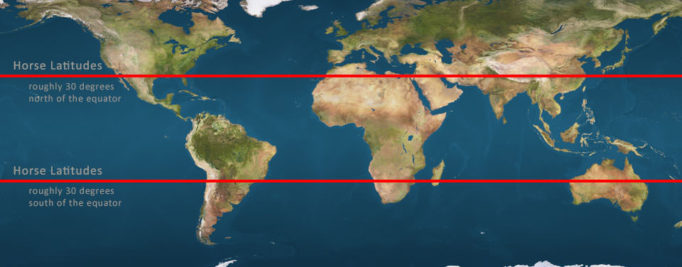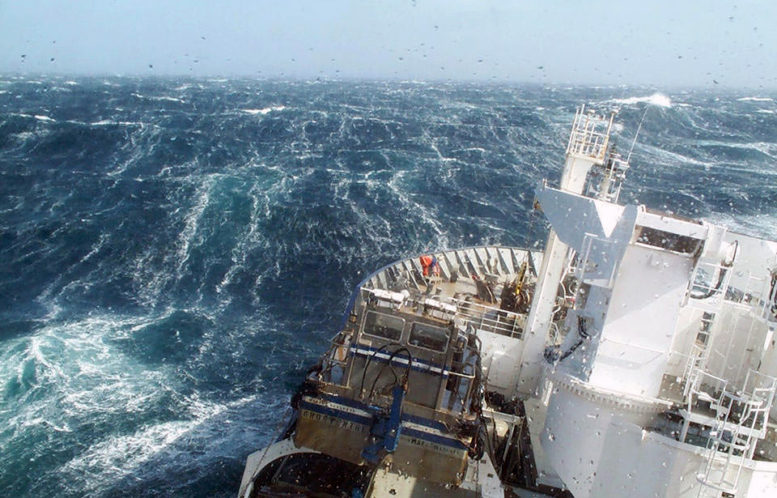Sailors call the latitudes between 40 and 50 degrees south of the equator the Roaring Forties. In 1611, Dutch explorer Hendrik Brouwer first used this band by which it effectively halved the duration of the trip from Europe to Java. “To run the easting down” was the phrase used to describe the fast passages achieved through the Roaring Forties.
During the Age of Sail (circa 15th-19th centuries), these strong prevailing winds propelled ships across the Pacific, often at breakneck speed despite the fact that sailing west into heavy seas and strong headwinds, especially around Cape Horn at the southern tip of South America, is one of the most treacherous sailing passages in the world.
Global wind currents like the Roaring Forties are influenced by the Earth’s shape and spin, and by the basic thermodynamics of rising hot air.
The Roaring Forties have strong, and often gale-force winds throughout the year, and don’t stay in their exact latitudinal designations but rather roam north and south across the Earth’s surface as seasons change. The winds also vary in their strength throughout the seasons.
The Roaring Forties winds shift towards the South Pole in the southern summer, but towards the Equator in the southern winter. During the Australian summer, the Roaring Forties take shape as warm air near the equator rises and moves toward the poles. Warm air moving pole ward on both sides of the equator is the result of nature trying to reduce the temperature difference between the equator, and at the poles created by uneven heating from the sun. During the Australian winter, the latitudinal band at 23.5 degrees north gets the 90-degree angle sunlight, and the mighty Roaring Forties in the Southern Hemisphere move north into mid-latitudes.

The horse latitudes are regions located at about 30 degrees north and south of the equator. These latitudes are characterized by calm winds and little precipitation.
This process sets up global circulation cells, which are mainly responsible for global-scale wind patterns. The air descends back to Earth’s surface at about 30 degrees latitude north and south of the equator. This is known as the high-pressure subtropical ridge, also known as the horse latitudes. Here, as the temperature gradient decreases, air is deflected toward the poles by the Earth’s rotation, causing strong westerly and prevailing winds at approximately 40 degrees. These winds are the Roaring Forties.
The Roaring Forties in the Northern Hemisphere don’t pack the same strength that they do in the Southern Hemisphere. This is because the large land masses of North America, Europe, and Asia obstruct the airstream, whereas, in the southern hemisphere, there is less land to break the gusty winds in South America, Australia, and New Zealand.
While the Roaring Forties may be fierce, just 10 degrees south has even stronger gale-force winds called the Furious Fifties. And 10 degrees south of the Furious Fifties lay the Screaming Sixties! Thanks to the sailors of yore for discovering these wild but faster passages.
Sources: NOAA; Encyclopedia Britannica; ABC Science.
